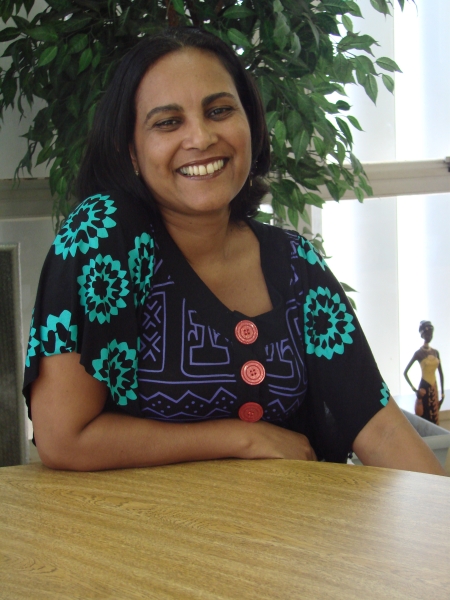
Q&A: Brazil’s School Meals Teach Good Eating Habits
Fabiola Ortiz
- Providing school meals for 45 million children is a remarkable achievement for Brazil. But the programme faces specific difficulties, as well as the generic problems plaguing any national plan in this vast country of more than 192 million people.
Brazil’s National School Feeding Programme (PNAE) has evolved from the strictly welfare-oriented approach it had when it was created 58 years ago, into a multi-purpose development strategy with educational goals and a focus on stimulating local economies. IPS sat down with its coordinator, Albaneide Peixinho, to discuss its accomplishments and challenges.
Q: The PNAE has existed since 1955. How has it progressed since then?
A: Nowadays it is based on several principles, like the human right to adequate nutrition and the aim of ensuring food and nutritional security by means of free and universal provision for all children and adolescents enrolled in the public education system.

Albaneide Peixinho, coordinator of Brazil’s National School Meals Programme.
Credit: Divulgaçao Fundo Nacional de Desenvolvimento da Educaçao
And also on equity and the constitutional right to school meals as a way of guaranteeing equal access to food.
The PNAE is part of the federal government’s Zero Hunger strategy, which encompasses 30 programmes designed to fight the causes of hunger and contribute to eradicating extreme poverty.
The government’s social vision was a key factor in the dramatic fall in poverty in this country, and it was reflected in the PNAE, which since 2003 saw its funding increased by 300 percent and its services expanded to middle-school students.
At the same time, the requirement that the programme must purchase produce from local family farms gives it an important role in reducing social inequality.
Q: What has it achieved?
A: The PNAE was created simply as assistance to some schoolchildren. Now it reaches 45 million students in basic education for the 200 days of the school year. Over the years it has accumulated experience and has taken on an ever wider scope, promoting improvement in educational indicators, economic and social development and social participation in health care, by teaching good eating habits.
The 1988 constitution guaranteed the right (to free school meals) of all pupils enrolled in primary schools. As of 1994, the programme which previously was centralised, with a governing body that drew up menus, bought food and distributed it throughout the country, was converted into a locally managed programme governed by means of agreements.
Since 1998 it has been further improved, for example by insisting on respect for the eating habits and the farming preferences of each locality, and the creation of school nutrition councils as oversight bodies, with representatives of parents, students, teachers, the community and the executive and legislative branches.
One of the main legal frameworks is law 11,947 of 2009, which stipulates that at least 30 percent of the resources of the National Education Development Fund be devoted to buying food produced on family farms, as well as providing the school meal service to all primary education students, including both children and adults.
Q: What problems does the programme face?
A: There are difficulties that are specific to the programme, and others that are inherent to any programme covering the whole of Brazil: the size of the country, the varied agricultural activities in the different regions, and the low productive capacity of family agriculture when it comes to supplying demand.
Other problems include differences in local customs, the different nutritional needs of students, lack of infrastructure to store, transport and prepare meals, a lack of space to set up school lunchrooms, as well as challenges in developing ongoing food and nutritional education that is intrinsic to the educational process.
There is also “competition” between the meals offered by the school and canteens or bars selling sweets, fizzy drinks, salty or fatty snacks, the “favourites” of children and adolescents. A 2009 resolution restricts the amount of fat, sugar and salt in PNAE meals.
Q: And what challenges does the programme intend to address?
A: We plan to carry out a thorough assessment of the nutritional needs of students and match them with adequate nutrition that they find acceptable, as well as with the farming culture and diets of every locality. Another challenge is finding professionals who are well-trained in this field.
Q: Is it possible to reach all primary schools, at federal, state and municipal levels?
A: The programme serves all schools that have formed their own school nutrition council and have hired a nutritionist. In 2012 there were 161,670 such schools, 83 percent of the total.
Q: How are the menus drawn up?
A: They need to be drawn up according to age range, type of school and the hours students spend in school. When two meals are served, at least 30 percent of daily nutritional requirements should be provided. In schools with a full-day curriculum, the minimum is 70 percent. (In Brazil, many schoolchildren attend either the morning or the afternoon shift.)
Q: Has it been demonstrated that school meals improve scholastic performance?
A: There is a variety of evidence on the role of nutrition in neurological, cognitive and intellectual development in childhood. Proteins, calcium, iron, iodine, zinc, vitamins and fish oils fulfil essential functions, as shown by different studies.
The school environment favours the formation of habits. Habits are formed from birth, by means of family customs and those taught by society – at school, in social circles and by the media – up until adult life, when along with symbolic aspects they set the pattern of individual and societal consumption.
The PNAE encourages eating fruits, vegetables and pulses and prescribes food hygiene control, precepts that lead to an adequate supply and healthy intake. The earlier these habits are learned, the greater the probability that they will be continued in adulthood.
http://www.ipsnews.net/2013/03/qa-brazils-school-meals-teach-good-eating-habits/
